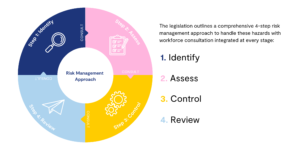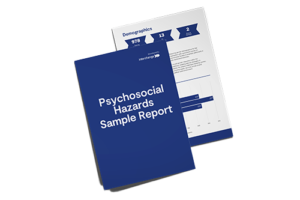The Interchange Psychosocial Assessment Tool (IPAT)
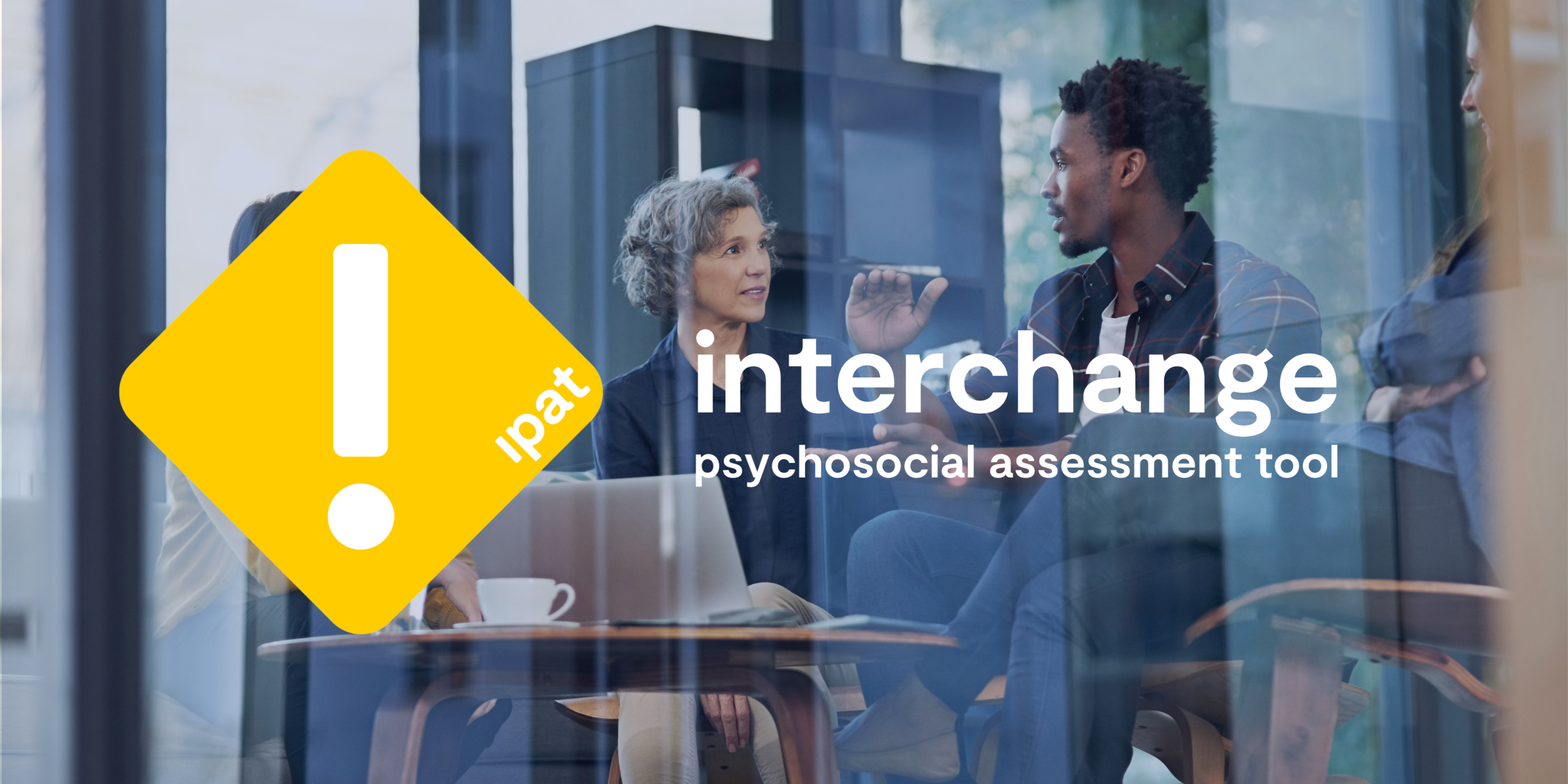
As new psychosocial legislation takes effect across Australia, your responsibility to cultivate a positive and supportive work environment has never been more critical.
At Interchange, we see this not just as a compliance requirement but as a powerful opportunity to enhance your organisation’s culture.
The Interchange Psychosocial Assessment Tool (IPAT) is a cutting-edge, research-backed survey tool that does more than tick boxes. Our approach dives deep into both protective and risk factors, providing you with a comprehensive understanding of your workforce’s well-being.
With our human-centered design and expertise in state-specific legislation, we meet you where you are in your journey. Let Interchange guide you through this process, turning compliance into a strategic advantage. The IPAT not only identifies hazards but also highlights areas of strength that can be woven into your risk management strategies.
Together, we can unlock the psychosocial puzzle, ensuring a healthier, more resilient workplace.
There’s more detailed information on the psychosocial legislation and Interchange’s research tool below. Otherwise if you’d like to talk with an Interchange person, fill out the form below and we’ll be in touch.
Read more:
New Psychosocial legislation has come into effect across most of Australia, making the Psychosocial health of your workforce your responsibility.
Specifically – employers are responsible for cultivating an environment where the social structure, physical conditions and work design positively support the experience of workers.
The way we see it, we all have to comply with the legislation by word of the law. So, what is the point of doing it through gritted teeth? Why not view this compulsory process as an opportunity to simultaneously benefit the organisation?
We understand that change often meets resistance. As a human-centered design organisation, we meet you where you are in your change journey.
Interchange is the right psychosocial partner for you because:
- We understand and synthesise the state-by-state nuance in legislation.
- We focus on both protective factors and risk factors.
- We have a practical, collaborative approach to recommendations and next steps.
Let’s deep dive:
Understanding the context
- Psychosocial hazard management took its first steps after the development of the Copenhagen Psychosocial Questionnaire (COPSOQ) in 1997.
- In Australia, our regulation in this space has been lagging – but finally governments and business are making in-roads.
- At Interchange, our approach is not just about compliance: we take an approach grounded in positive psychology that is truer to COPSOQ and offers significant cultural benefit.
- We are experts in the synthesis of data across the web of state government interpretations and obsess over practical outcomes and a tangible path forward for you.
- We’re excited to help you unlock the psychosocial puzzle, discover untapped wellbeing opportunities, and ensure compliance.
The tool we keep talking about…
The IPAT is a research-backed survey tool designed to provide organisations with a comprehensive, quantitative, and employee-focused method for pinpointing and assessing potential hazards affecting employees’ mental and physical well-being.
The IPAT serves a dual purpose: it aids in the recognition of psychosocial hazards and, crucially, identifies neutral and protective factors within the workplace. Neutral factors are those that neither harm nor enhance employee well-being—they offer a ‘temperature check’ of the current work environment. Protective factors, conversely, are those elements that actively contribute to a positive workplace, bolstering employee resilience and well-being.
Understanding these factors is essential; not only do they provide a benchmark of the organisation’s health, but they also offer strategic advantages, allowing for these positive attributes to be reinforced and woven into the fabric of risk management strategies.
We have created a shareable infographic of these, which you can access below. This guide can be easily shared with the workforce.
It helps ensure that everyone is on the same page and establishes a common language regarding psychosocial factors.
The Process
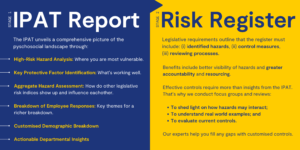
Available Reports:
To view a sample psychosocial hazard report:
Download a de-identified report here
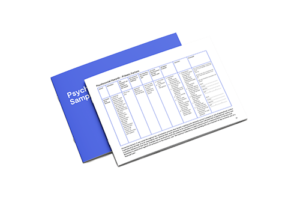
Download a sample risk register here.
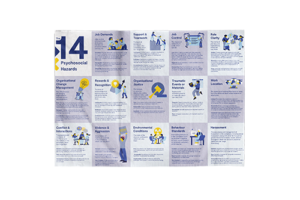
Download a printable poster of the hazards here.
Example Timeline:
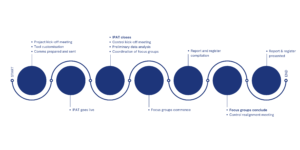
That being said – a focus around legislation can only take us so far.
To create a psychosocially safe climate, we need a cultural shift. Everyone – from leaders to frontline workers – need to care about creating and sustaining a psychosocially safe workplace.
Figuring out how to tackle psychosocial safety within your organisation can take time. Even with the best of intentions to act quickly, we often hear from our clients that the process feels daunting. We can keep saying that it’s a blessing to have a structured, comprehensive approach to looking after our people’s psychological health, but that logic doesn’t make our hesitation evaporate. Psychosocial factors are integrated into so much that we do at work – our whole culture – that starting anywhere might make us feel like we’re opening Pandora’s Box.
We’ve found that helping people understand that this journey is not entirely new has given them confidence to take the first step. When we look back at history, we can recognise that the path we’re on with psychosocial regulation is actually kind of familiar: we’ve been down it before with the evolution of physical safety.
To help you see how, we’ve crafted a narrative based on real events. The clips and audio are all taken from Australian history. Some of them may be familiar to you – that’s because this narrative is an integral part of our collective experience.
Watch this video, then continue reading below:
As the video shows, initially, the focus was on keeping individuals physically safe. Now-fundamental safety gear like hard hats and safety glasses were the gold-standard. But we quickly discovered that this wasn’t sufficient to significantly mitigate the rate of death and injury at Australian workplaces.
Then came the era of legislation – an attempt to create rules and regulations to keep people safe. This was another necessary step and forced more businesses to take worker safety seriously. Yet even the arrival of new laws failed to significantly bring down the workplace fatality rate on its own.
It was only when the focus shifted towards a holistic safety culture approach that we saw a profound transformation. Leadership, mindset, attitudes, and behaviour became the cornerstone of a safety culture – we came to understand that certain ways of working could ultimately keep us safe in the long run.
So where does that leave us with Psychosocial Safety? Perhaps what you’re realising now is that we’re moving through the same stages. We started with a focus on individuals – mental health was traditionally a problem that the individual needed to take care of, and support was offered accordingly. Think EAPs and post-incident trauma support – neither are bad, but on their own, they don’t do enough to have an impact on your workforce’s psychological health.
Now, we’re in the era of legislation. Businesses are adapting to regulatory frameworks that guide them on how to go about protecting their people psychologically. At the very least, the psychosocial hazards provide a check-box approach for an organisation to ensure it has a policy or procedure in place to guide behaviour.
However, where we really need to get to is the adoption of a psychosocial safety culture that isn’t just reactive, and doesn’t just tick the boxes. Rather, it needs to put in place systems and procedures alongside behavioural standards and expectations that help every employee look out for other employees.
We like to think of addressing psychosocial hazards like managing an aquarium. Imagine an aquarium with various fish, each with their own preferences and dislikes. This is your organisation’s culture. The goal is to create one healthy environment that suits them all.
Fixing one sick fish and putting it back in the same aquarium won’t work in the long run. It’s not about Jimmy the axolotl or Gill the goldfish; it’s about taking care of every fish collectively, of the whole system rather than the individuals.
Similarly, addressing employees’ stress or mental health concerns individually, without addressing the overall work environment, won’t lead to lasting improvements. Rather, ask yourself:
- What are the aspects of the physical environment that could be contributing to poor psychological health in my organisation?
- What are the aspects of the social structures (i.e. the way people interact) that could be contributing?
- What about the way in which people’s work is designed: how might that be having a negative effect on people’s psychological health?
When you adopt this perspective, you’ll discover numerous ways to enhance the ‘aquarium.’ You can improve water quality, adjust the temperature, and provide toys for the fish to enjoy.
The new legislation serves as a valuable guide for shaping a healthier organisational culture. It provides a concrete framework for enhancing elements that are sometimes considered slippery. Whether you’d realised it or not, society’s approach to physical safety has probably given you more knowledge in this space you might have initially expected. You and your organisation have shown the necessary skills to overcome workplace challenges, to be agile and adaptable, to create change.
So instead of thinking about this from a compliance perspective, we should embrace the possibilities inherent in this legislation. When we do, we unlock the potential for fostering stronger connections, nurturing creativity, driving innovation, and boosting overall workplace productivity.
Grab some paper and reflect on the following questions:
- When you watched the video, what are three thoughts or feelings you had?
- What parallels can you draw between this video and the current climate of psychosocial safety?
- What lessons from history could you apply to modern safety challenges?
- What could be one step in the right direction for your organisation?
If you’re stuck, don’t worry. We love understanding your organisation’s unique circumstances and having conversations with you about how to tackle this.
To book in a free half-hour consult and get some advice, click here. Alternatively, you can email us at info@interchange.com.au or fill in the contact form on our website.
